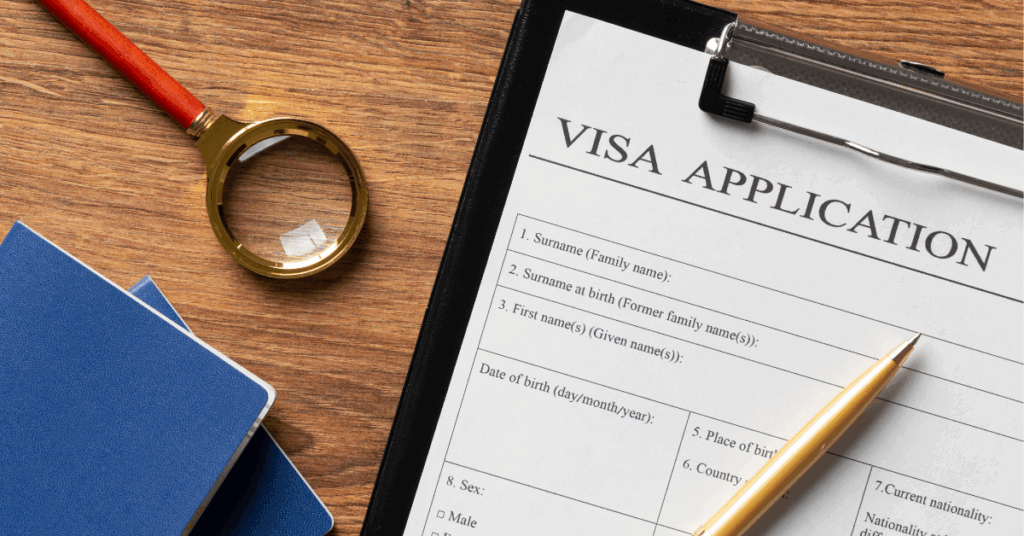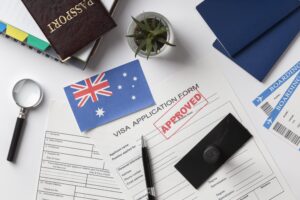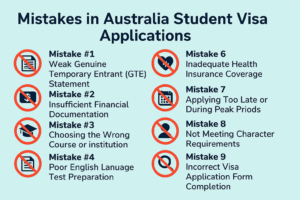
Moving to Australia permanently is a dream for many people worldwide. Australia offers excellent job opportunities, a high quality of life, and a welcoming multicultural society. If you’re considering obtaining Australian Permanent Residency (PR), this guide will walk you through every step of the process in clear, straightforward terms.
Why Choose Australian PR?
Australian Permanent Residency allows you to live, work, and study anywhere in Australia for up to 5 years. After living in Australia for 4 years on a PR status, you can apply for Australian citizenship. The best part? You can include your spouse and children in your application.
With an Australian PR, you get access to Medicare, which is Australia’s excellent healthcare system. You can also sponsor eligible relatives for PR in the future and travel in and out of Australia freely without any restrictions. Most importantly, it gives you the freedom to live and work anywhere in the country without being tied to a specific employer or state.
Am I Eligible for Australian PR?
Before starting the Australian PR process, you need to check if you meet the basic requirements:
- Be under 45 years old when applying.
- Have English proficiency (IELTS or equivalent).
- Your occupation must be on the Skilled Occupation List.
- Score a minimum of 65 points on the PR points system (competitive applicants usually have 80–85 points).
The points system rewards candidates based on age, English proficiency, education, and work experience. For example:
- Age 25–32: maximum 30 points.
- Superior English (IELTS 8.0 in each band): up to 20 points.
- Overseas experience (8+ years): 15 points.
- Australian work experience (8+ years): 20 points.
- Educational qualification (Bachelor’s/Master’s/PhD): 15–20 points.
Don’t Risk Your PR Application on Guesswork.
Get a comprehensive, personalised eligibility assessment from our MARA-certified agents today.
Popular Australian PR Visa Options
There are three main pathways to PR, each designed for different applicant profiles.
Australian PR Visa Comparison Table
| Visa Type | Who Can Apply | Sponsorship Needed? | Processing Time (2024–25) | Key Benefits |
| Subclass 189 – Skilled Independent Visa | Skilled workers with an eligible occupation | ❌ No (independent visa) | 7–12 months | Freedom to live and work anywhere in Australia |
| Subclass 190 – Skilled Nominated Visa | Skilled workers nominated by an Australian state/territory | ✅ Yes (State nomination) | 8–12 months | Extra 5 points, priority processing, pathway to PR |
| Subclass 491 – Skilled Work Regional Visa | Skilled workers willing to live in regional areas | ✅ Yes (State/territory or family sponsor) | 6–9 months | Faster invitations, PR pathway after 3 years in regional Australia |
Disclaimer – The processing times and visa details provided here are based on information available from the Australian Department of Home Affairs. Actual timelines may vary depending on individual circumstances, application volume, and updates from the government. For the latest information, please refer to the official Department of Home Affairs website or contact us.
Step-by-Step Australian PR Process
Step 1: Choose Your Occupation (Timeline: 1-2 weeks)
Your first step is choosing an occupation from Australia’s Skilled Occupation Lists, as your eligibility depends on it. These lists are separated based on the type of visa you are applying for.
The Medium and Long-term Strategic Skills List (MLTSSL) includes jobs that are in high demand across the country and applies to Subclass 189, Subclass 190, and Subclass 491 visas. The Short-term Skilled Occupation List (STSOL) features occupations that are needed for a shorter duration and are linked to Subclass 190 and Subclass 491 visas, but not Subclass 189. Lastly, the Regional Occupation List (ROL) is designed only for Subclass 491, which focuses on encouraging skilled workers to settle in regional parts of Australia.
You need to check if your job is on the relevant list and ensure you have the required work experience and educational background. It’s crucial to choose the occupation that best matches your qualifications and experience rather than simply picking what seems easier to assess. This decision will impact your entire application, so take the time to thoroughly research how to obtain Australian PR.
Step 2: Get Skills Assessment (Timeline: 6-12 weeks)
Every occupation has a designated Skills Assessing Authority that will evaluate your qualifications and work experience according to Australian standards. Engineers Australia handles engineering occupations, while the ACS (Australian Computer Society) assesses IT professionals. VETASSESS (Vocational Education and Training Assessment Services ) covers various professional occupations, and CPA (Certified Practising Accountant) Australia deals with accounting roles.
You’ll need to provide educational certificates and transcripts, detailed work experience letters from employers, your comprehensive CV or resume, and passport copies. The cost varies significantly depending on the assessing authority. Most assessments take 6-12 weeks, but some complex cases can take up to 20 weeks, so plan accordingly.
Step 3: English Language Test (Timeline: 2-4 weeks)
You must prove your English proficiency through one of the accepted tests. IELTS (International English Language Testing System) is the most popular choice, where competent English requires 6.0 in each band, proficient English requires 7.0 in each band, and superior English demands 8.0 in each band. Other accepted tests include PTE Academic (Pearson Test of English Academic), TOEFL iBT(Test of English as a Foreign Language internet-based test), OET (Occupational English test) for healthcare professionals, and Cambridge English.
Aim for higher scores as they significantly increase your points total. You can retake the test if needed, and your best score within the validity period can be used. Remember that English test results are valid for 3 years from the test date.
Step 4: Submit Expression of Interest (EOI) (Timeline: 1 day)
Once you have your skills assessment and English test results, you can submit your EOI through the SkillSelect system. The EOI is not a visa application but rather a free online form that expresses your interest in migrating to Australia. It shows your points score to the Australian government and remains valid for 2 years.
You’ll need to provide personal details, skills assessment information, English test results, complete work experience history, and educational qualifications. It’s crucial to be completely honest throughout this process, as providing false information can result in a 3-year ban from applying for Australian visas.
Step 5: Receive Invitation to Apply (Timeline: 1-12 months)
The Australian government sends invitations twice a month to the highest-scoring candidates through invitation rounds. These rounds usually occur on the 11th and 25th of each month, though dates can vary. The system works on a points-based ranking, where higher scores get invited first. Some popular occupations have annual ceilings, meaning only a limited number of invitations are available each program year.
Current trends for 2024-25 show that most successful applicants have between 80-85 points. Popular occupations like IT and Engineering are extremely competitive and often require the maximum possible points. Regional visas (491) typically have lower point requirements, making them more accessible for candidates with moderate scores.
Step 6: Lodge Visa Application (Timeline: Within 60 days of invitation)
Once you receive an invitation, you have exactly 60 days to submit your complete visa application with all supporting documents. This deadline is strict, and extensions are rarely granted. You’ll need identity documents, including a passport and a birth certificate, your original skills assessment letter, English test results, and certified copies of all educational documents, including degrees and transcripts.
Work experience documentation is crucial and should include employment letters on company letterhead, recent payslips, tax returns or income statements, and any professional membership certificates. Health checks must be completed by approved panel doctors, and you’ll need police clearances from every country where you’ve lived for 12 months or more since turning 16. Finally, you must provide evidence of funds through bank statements showing you can support yourself and your family in Australia.
All foreign documents must be translated by certified translators, and you need certified copies from authorised personnel like justices of the peace or lawyers. Organise your documents clearly with a checklist to ensure nothing is missed.
Step 7: Health Examinations (Timeline: 2-4 weeks)
You and all family members included in your application must undergo medical examinations by approved panel doctors. The standard tests include a general medical examination and chest X-ray, with additional tests potentially required based on your age and country of residence.
You must book appointments with panel doctors within 28 days of lodging your application. The results are sent directly to Australian immigration authorities, and you typically don’t receive copies yourself. The cost may vary, depending on the required tests and the country where examinations are conducted.
Step 8: Police Clearances (Timeline: 2-8 weeks)
Police clearances are required from your current country of residence and any country where you’ve lived for 12 months or more after turning 16. The timeline for police clearances isn’t the same everywhere and can differ depending on the country. For example, in India it usually takes around 2–4 weeks, in the UAE it’s generally processed within 1–2 weeks, while in the UK it can take anywhere from 2–6 weeks. For applicants from the USA, FBI clearances often take longer, usually around 12–16 weeks. These are only average timelines and may vary depending on local processing and individual circumstances.
Start this process early, especially if you need FBI (Federal Bureau of Investigation) clearances, as they take the longest time. Some countries require you to be physically present to apply, while others allow online applications or applications through consulates.
Step 9: Application Processing (Timeline: 7-12 months)
Once you submit everything, the Department of Home Affairs begins processing your application. Current processing times for 2024-25 are 8-11 months for subclass 189, 8-12 months for subclass 190, and 6-9 months for subclass 491. These times can vary based on the completeness of your application, your country of residence, the time of year you apply, and the complexity of your case.
During processing, it’s important not to change jobs without informing the authorities, keep your contact information updated, and respond quickly to any requests for additional information or documents. Case officers may contact you for interviews or clarifications, so monitor your email regularly.
Step 10: Visa Grant (Timeline: 1 day after decision)
When your application is approved, you’ll receive your visa grant letter via email. This letter contains crucial information, including your visa grant number, conditions attached to your visa, and the date by which you must make your first entry to Australia, which is typically 12 months from the grant date.
Your 5-year PR period starts from your first entry to Australia, not from the grant date. Keep your grant letter safe, as it’s your official proof of PR status. Once you arrive in Australia, you can apply for evidence of your PR status through VEVO (Visa Entitlement Verification Online) for various purposes, like employment or government services.
Common Mistakes to Avoid
- Choosing the wrong occupation not aligned with your background.
- Submitting incomplete documents for skills assessment.
- Scoring low in English tests.
- Missing critical deadlines for EOI (Expression of Interest) or application.
- Providing uncertified or incorrect translations.
- Giving false information can lead to bans.
Expert Tips for Success
- Start early – some steps (skills assessment, police checks) take months.
- Maximise English scores – higher bands significantly boost points.
- Stay updated – immigration rules and quotas change frequently.
- Keep multiple certified copies of all documents.
- Consider professional help if your case is complex.
Why Choose Professional Help?
While it’s possible to apply independently, registered migration agents provide valuable expertise in occupation selection and strategy development, thorough document preparation and review, proper application lodgement and follow-up, effective communication with immigration authorities, and timely updates on policy changes that might affect your case.
At Bombay Migrations, our MARA-certified agents have successfully helped hundreds of families achieve their Australian PR dreams. We provide comprehensive end-to-end support throughout your entire immigration journey, from initial assessment to visa grant and beyond. Our experience with complex cases and deep understanding of immigration policies can significantly improve your chances of success while reducing stress and uncertainty.
Final Thoughts
Getting an Australian PR is a life-changing decision that requires careful planning, patience, and persistence. While the process might seem overwhelming initially, breaking it down into manageable steps makes it much more approachable. Australia actively welcomes skilled migrants who can contribute to its diverse economy and multicultural society.
The key to success lies in thorough preparation, starting early, maintaining accurate documentation, and staying committed throughout the journey. With proper guidance and meticulous attention to detail, your dream of living and working in Australia can become a reality. The investment of time, effort, and money is substantial, but the long-term benefits of Australian PR make it worthwhile for most successful applicants.
Ready to start your Australian PR journey? Contact Bombay Migrations today for a comprehensive consultation with our experienced immigration specialists. We’ll thoroughly assess your unique profile and guide you through the most suitable pathway for your specific circumstances, ensuring you have the best possible chance of success.
Disclaimer: It’s general information. Each case will be assessed individually by an Immigration Lawyer / Migration Agent who will advise the options accordingly. For more information, you can also check the Department’s website https://www.homeaffairs.gov.au/
FAQs
What is the estimated cost of applying for an Australian PR visa?
The total cost of applying for an Australian PR visa varies depending on your visa subclass and personal requirements. It generally includes the Visa Application Charge (VAC), skills assessment fees, English language testing, medical examinations, and police clearance certificates.
As of the latest fee update, the VAC for the main applicant in most Skilled PR visa categories (such as 189, 190, and 491) is approximately AUD $4,910.
Additional costs apply for partners, dependants, skills assessments, and other mandatory checks.
For an exact estimate based on your situation, it’s best to consult a registered Australian immigration consultant or check the latest fees on the Department of Home Affairs website.
What are the documents required for an Australian PR application?
Essential documents include a positive skills assessment letter, English test results, comprehensive work experience proof, police clearances from all countries lived in, and health examination certificates. The requirements ensure you meet the detailed eligibility criteria for Australia PR.
I am an existing resident; how does the Australian Resident Return Visa work?
The Australian Resident Return Visa (Australia RRV) is for current or former Permanent Residents who need to extend their ability to travel outside and re-enter Australia after the initial 5-year travel facility on their PR visa expires. You must apply resident return visa to Australia before or after the travel facility ends to maintain your travel rights.
Are there pathways besides skilled migration, like the employer-sponsored visa in Australia?
Yes. The Employer Nomination Scheme (Subclass 186) provides a direct path to PR Australia through a sponsoring employer. Other options include family visas (Partner, Parent) and the provisional 494 visa Australia, which is a regional employer-sponsored visa leading to PR.

